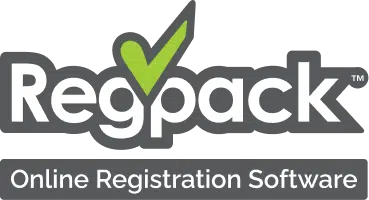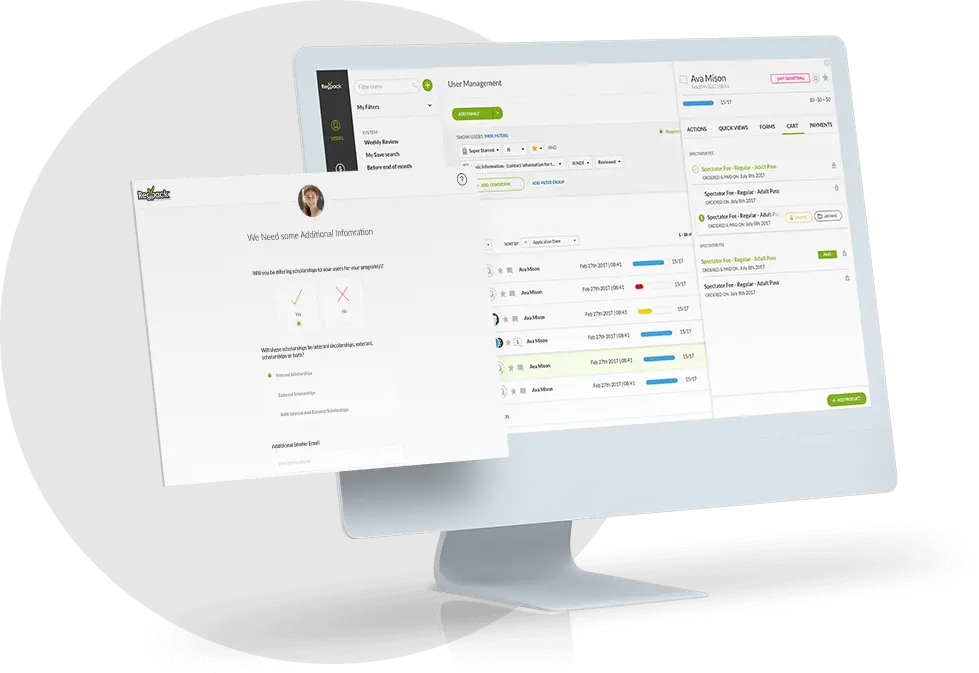Selling online courses is a lucrative way to expand your business’s reach by widening your potential audience beyond your own region. Not only is it more scalable than traditional in-person courses, but your operating costs are also significantly lower than traditional in-person course offerings as well.
That’s probably why the numbers predict that the e-learning market will grow to be a $275 billion dollar industry by 2022 and projected $325 billion by 2025!
If you’re looking for a way to make the most out of selling courses online, this guide will help you understand what you need to create a business model around online course sales, how to sell your courses, and how to set up your website for success.
Offering courses online is also a great additional revenue opportunity for businesses that run in-person programs. The online options that complement or mirror your in-person offerings is a great way to grow your brand and business, and engage with current or past clients in more ways.
Plus, depending on your course content, much of what you create in your first season can become evergreen, which means you can use it again and again for future courses – less work, more profit.
Solutions like Regpack make it even easier than ever before to create and format your online course offerings and allow you to sell online courses from your own website, including managing registration, client data, and online payments so you can focus on course content creation, and not on the administration side of your business.
Table of Contents
What is the target audience for your online course?
How do you get students to your online courses and website?
How to sell courses from your own website
How to scale up your course-selling profits
Use Regpack to sell your online courses
What is the target audience for your online course?
The best place to start when creating your ideal audience is to determine who is in your network and who your course material serves.
If you already have a business and/or a following on social media, this is your natural market and you can begin working on what the ideal course purchaser would be.
You’ll want to understand who your audience is and WHERE they are so you can market your course to them. This might be your email marketing list for your business, your Facebook page, or you might need to start a marketing campaign to reach people who have never heard of you.
If you are going with the last option, really defining your audience is key so that ads you create target the right gender, age, location, interests, and more so that you will get the best response.
Consider networking with other professionals in the space who engage with your target audience to help you promote your course. Be a guest on their podcast, ask that they share some marketing material to their followers, write a guest blog, etc.
What is your topic, and what sets your course apart?
The most successful online courses are all about sharing the knowledge you already have with others.
Doing this online gives you access to an infinite amount of people who are looking to learn what you have to teach.
Creating a topic or topics for your course starts with your expertise and where you can bring the most value to others.
A few examples…
- If you are a successful business owner, consider a course on building a business from A-Z or writing your first business proposal. You might have a business in construction, but your knowledge about building a business from the ground up can generate revenue on the side and your success in business is your credential to serve as an expert on the topic.
- If you have a successful Podcast, teach others your success – where did you start? What equipment do you love? How do you gain a following?
I think you see the point: Once you’re successful at doing something, teach other people how to be successful at that thing.
What do you have to offer your students?
Consider offering free and paid content together as a way to gather more interest.
Many might be attracted to a free, shorter course- during which you can then market your paid offerings too – and many will bite because they’ve enjoyed what they’ve learned so far.
You can also create more value from the business you currently run by offering online programming for current clients AND to attract new clients.
If you’re a personal trainer and make your living with private 1:1 lessons, not only can you take this virtual and offer sessions online to those outside your region, but create mini-courses on weightlifting, pilates, at-home dumbbell workouts, etc. that people can purchase based on their interest. A purchase of one 4-week program can lead to a new personal training client, or will encourage them to purchase more programs from your offerings!
How do you get students to your online courses and website?
Social media marketing
The most obvious way to drum up interest is through social media marketing – which includes your network, and cross-posting with others to reach their network.
Facebook also makes it very easy, once you have your target audience defined, to share posts and ads attracting people outside of your immediate network to your course offerings.
Create custom posts and ads that speak directly to every aspect of your target audience. For example, if you’re looking for small business owners across a few different markets, you’ll want to create copy and ad creative, including posts you might share, that speak directly to THAT audience – so women who own businesses vs men who own businesses should be separated so the imagery and language you use is targeted towards the right audience.
The same goes for a personal trainer marketing to different age groups. A 55-year-old man might not be as motivated to check you out if you share only images of young people working out and vice versa. The key is marketing your course in a way that makes the target audience feel it was made just for them.
SEO
As you build your online course business, having a website that ranks well for your target keywords is key to your growth.
First, you need to understand WHAT your target audience is searching for (using tools like Moz or Google Keyword Planner), and then create content both on your main website pages and in your blog that matches this searcher intent.
If you want to attract people looking to learn about how to write a business plan, or looking for small business training opportunities, you’ll want to optimize your website and content for these keywords to ensure you rank organically in Google to show up when your target audience is searching for these solutions.
Many businesses choose to use an SEO agency to help do the grunt work on this keyword research and make a content plan for ensuring your website ranks well and is set up for SEO success.
Email marketing
If you already have an email list and audience to market to, you’re ahead of the game! Use email as a way to communicate your new online course offerings!
If you are using an email marketing tool that allows you to segment your audience, even better. Creating content for specific groups of people so you can tailor the message and the right offerings to them, will net you a higher engagement and purchase rate for your courses.
Word of mouth
This works great on a local or regional level, but its important for a more global reach as well – through social media and other referral incentives, you can create a word of mouth marketing machine!
Word of mouth starts with giving your happy course customers and/or network the tools they need to make it easy to share how much they love you. A coupon code for 5% off their next course purchase when they refer a friend is a great way to start. Creating great content and asking them to share on social media is another great way to use your network to spread the word.
How to sell courses from your own website
The hard part isn’t just creating your course ideas and building your curriculum and resources. You also need to consider and plan for how to manage the day to day administration of your course registrations, payments, and marketing.
First, you need a website. Next, you need a way to gather registration data, allow participants to pay, and manage your data productively so you can continue to effectively market to participants and communicate important information.
How to sell courses online? Pick the best tool for selling your courses
Your best option is to find 1 solution that does it all for you – a solution that can create customized online forms, integrates a payment form into the process to collect payments, allows for automatic billing such as a monthly payment option or payment plans to spread out higher-ticket courses to make them affordable for everyone, and client communication tools.
With these tools all built into one system, you can now use the database created to filter for everyone taking Course A and emailing them the private video conference link for your next session. You can view all students who have an open balance that you want to send a quick reminder to. And you can filter for everyone who took specific courses, to customize an email marketing campaign to.
Finding the right solution is key for a smooth operation behind the scenes.
Collecting Payments for Your Online Courses
The right tool MUST have billing functionality to allow you to correctly and easily bill attendees based on their course selections.
In order to collect payments on your website, you need a solution with a built-in merchant account. While you can use a simple eCommerce solution to allow for a ‘shopping cart’ experience, you’ll lose the benefit of a more robust course software that will allow you to gather the information you need from attendees, present specific offerings based on their selections, and bill them properly – with payment plans and automated billing tools that make it easier for people to pay over time for your higher value courses.
Pricing Your Online Course
Finding the sweet spot that allows you to maximize revenue without turning people off is hard, and dependent on your content material, length of the course, and your brand awareness.
A key starting point is deciding how much YOU think your course is worth, and then upping it a bit. It’s common to undervalue what you have to offer – and this is your first mistake! You are providing and sharing knowledge that took years of work, possibly education, and effort to gain. Sharing that with others in a structured way is worth more than you think!
Start with looking at other similar courses on the market: how much are they charging? Is their content different? How long is the course? What materials are provided?
That is a great starting point to add or subtract from your price based on what you are offering.
It’s also important to create revenue goals for yourself. How much time will you be spending on the course content creation, marketing, and facilitating the course? How much is your time worth?
Lastly, what is your pricing structure? Will you charge one flat price for a course? Will you allow people to buy a subscription or membership to get all of your course content as long as they are a “member”?
Create Pricing Tiers
It’s possible to combine your pricing options into Tiers, if your content allows for this.
This usually breaks down to:
- Free
- Flat payments for 1 course
- Ongoing subscription for access to some or all of your content
- Option “Premium” type service that gets access to your content + bonus materials, free webinars, more direct access to you, etc
Payment Plans for Higher Tiers
If you go the route of multiple tier options, it’s a MUST to offer payment plans to support your subscription model.
So for ongoing subscription fees and premium membership, you want to make sure clients are billed on the right date monthly, quarterly, or annually.
You also want to ensure that if they pay annually, which would most likely be a high payment amount, that you offer payment plans to allow them to spread out payments.
This is not only a best business practice but encourages more people to invest in your course offerings when the payment structure suits their budget.
Payment plans also guarantee your revenue week over week, which improves your cash flow and will sustain your business through the long haul.
Offer more than one way to convert on your website
The most obvious way to get the course sign-up process started is to use big buttons on your website to “Sign-Up” and “Register”. And while this is essential, it isn’t enough.
If you haven’t gleaned already from this article, creating relevant content targeted for your audience is key for your social media marketing and SEO. Embedded in this content can and should be Calls to Action that point readers towards your courses and online offerings.
If someone is reading about your top 10 tips to write a business plan, the content should also include a registration link and/or more information about your business plan writing courses.
Use every opportunity to get visitors on your website to request more information or sign-up for their first class!
Email newsletters and industry tips
A great place to plug your class registration is through your email marketing newsletters, and through guest blog opportunities offering industry tips relevant to your audience.
Reach out to your network and offer guest blog articles that they can publish on their website. Everyone, even you, will be looking for well-written and well-informed content to bring visitors to your site.
Not only are guest posts a great opportunity to build your SEO, but they also allow you to market your classes and courses to another audience: the readers of that blog post or article!
eBook versions of your courses
Another great way to directly target people who are looking for EXACTLY what your course provides is creating longer-form content that has great SEO so people can find it!
If you can translate some or all of your course offerings and content into a PDF form, this can be a great lead generator.
For example, you can offer a short version of your course that leaves readers wanting more, and market your full-length course through the eBook.
You can also require an email to download some or all of the course content, so you can then use that contact to market future courses and similar content.
Not only that, the more content you have – the more it will be shared! And the more it’s shared, the more you will become an authority on your topic. This is great for word of mouth marketing; it will also help your sales because you’ve made yourself a ‘brand’ with name recognition that people recognize and trust.
Webinar sign-ups
An alternative or addition to the eBook idea is webinars. Take micro topics from your main courses, and market it as a webinar. You’ll get contact information to market more courses and offerings, and you can build your name recognition at the same time.
Webinars offer a really fun and unique experience to connect with experts in the field. Viewers can see you live, in real-time – and you can share a ton of visual content in a dynamic way. Webinar chats also allow you to engage directly with your audience.
When marketing your webinar, you will attract exactly the audience you want who are looking to learn more about the topic. Your webinar might touch on 1 or 2 main points, and if they enjoy themselves, will be more apt to pay for your longer, more comprehensive course offerings on the same or similar topics.
Take feedback from your first students/cohort
Having an open mind and accepting feedback from your students and network is key to your continued growth.
Use what works and what people responded positively to, and throw out what didn’t! As you get repeat course attendees, they will notice how your offerings and content changed based on your own growth and feedback and will keep coming back.
Utilizing survey tools and analyzing the data from that feedback will help you refine your courses and in turn, will allow you to raise prices and generate more income.
How to scale up your course-selling profits
Offer ‘learning pathways’ with more than one course
A learning pathway, or series of courses, allows you to engage with your audience for longer than just a one-off course.
A learning pathway will take participants on a path or journey on a specific topic, with several linear courses to follow to “complete” the path.
This is great for business, since you’re selling not one, but multiple courses. The more participants engage with you, even through one learning pathway, the more they’ll want and you’ll have lifelong customers!
Offer discounts to repeat students
It’s hard to pass up a good deal.
By offering a discount for past students and/or for multiple course purchases – you incentivize your audience to become repeat customers.
A good course software will automate much of this for you – whether you create discount codes or have the system automatically apply discounts when multiple classes are ordered.
Discounts are also great reasons to reach out via email marketing as it gives a reason for touching base and encourages future purchases.
Ask your students what they want to learn next
Surveys are a great way to get feedback on previous courses, but they also work for bouncing ideas off your past students about what more they want from you.
This data is crucial to planning more offerings, understanding where YOUR market is when it comes to interest and expectations for future learning and purchasing.
Use smart reporting to make data-driven decisions
As you gather data via surveys, registrations, payment trends, and more – you can use your software’s reporting tools to make data-driven decisions on where to go next.
Your marketing depends on understanding your ideal customer, what courses worked and which didn’t, and where to invest time and energy.
Use Regpack to sell your online courses
The most important tool in your online course toolbox is a course onboarding solution that will allow you to capture student information, allow them to select different options that you offer, and then charge everyone the correct amount, in full and/or with payment plan options you set up.
Good software will save you HOURS and THOUSANDS in administrative time, preventing loss of revenue due to confusion on pricing and orders, and will make selling your online courses easy!
Look for a course management solution that can help you:
- Create payment plans for students to choose from. This makes it easy for high ticket items to be purchased and paid off on a schedule that works for your audience
- Allows you to customize the onboarding process – asking the questions you want, and collecting the data you need
- Provides unlimited reporting so you can pull the data points you need, in any way you need it
- Has sales and payment reports built in so you can do accounting easily for your business
- Allows you to display your offerings on your website
The best plan of action is to find solutions that look good – and do a demo! When you can see the system in action – including the experience your students will have AND the interface you will work in, plus get a price quote – you can make a better-informed decision on what will work for your business and your budget.

















